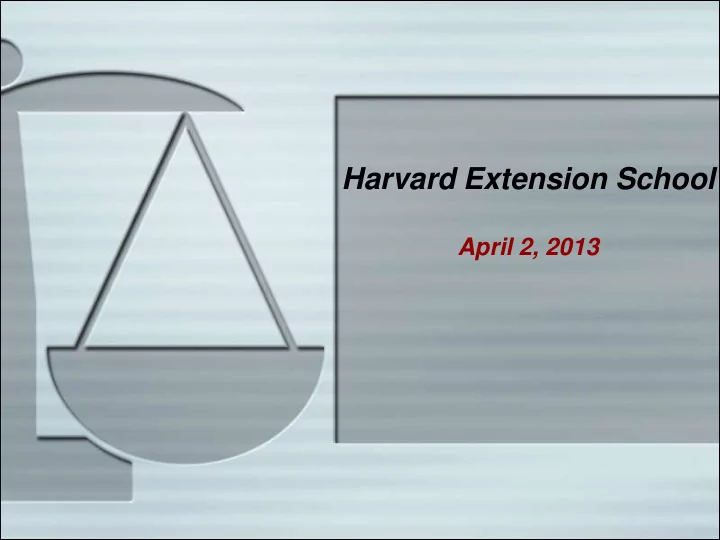

Harvard Extension School April 2, 2013
Environmental Justice in New Jersey 2013 Nicky Sheats, Esq., Ph.D . Director, Center for the Urban Environment, John S. Watson Institute for Public Policy of Thomas Edison State College and member of the New Jersey Environmental Justice Alliance
A Preliminary Screening Method to Estimate Cumulative Environmental Impact Presentation by the New Jersey Department of Environmental Protection to the Environmental Justice Advisory council December 2, 2009
Indicators: • NATA diesel (1999) • NATA cancer risk • NJDEP benzene estimates • Traffic (all) • Traffic (trucks) • Density of major regulated sites • Density of known contaminated sites • Density of dry cleaners • Density of junkyards
Environmental Justice: At the intersection of the civil rights and environmental movements.
Environmental Justice: Concerned with: • The disproportionate burden of pollution inflicted upon communities Of Color and poor neighborhoods. • Participation in decision-making by Environmental Justice communities. • Access to benefits produced by improving the environment.
Who I Am and What I do: • Member of EJ community. • Use science and legal background to develop EJ policy. • Write different types of comments. • Help build capacity.
EJ Organizations: • NJ EJ Alliance • EJ leadership Forum on Climate Change • EJ and Science Initiative • NE EJ Attorneys
Mainstream Activities: New Jersey: • NJ Clean Air Council • Clean and Healthy Ports Coalition (steering committee) • NJ Climate Change Adaptation Alliance National: • EPA Clean Air Act Advisory Committee • National EJ Advisory Council • National Climate Assessment
Cumulative Impacts: How do we address multiple sources of pollution in a community?
Problem: • We attempt to regulate pollutant by pollutant through individual standards. • But there can be detrimental health effects even if no individual standard is violated.
NJ EJ Alliance Cumulative Impacts Policy: • Municipal Policy: Model Ordinance • Statewide Policy: Integrating cumulative impacts into DEP permitting
An Ordinance to Protect Public Health and the Environment and to Promote Environmental Justice: • Applies the precautionary principle • Requires a cumulative impacts assessment for new projects • Requires a municipal environmental resource inventory that includes environmental justice information
Statewide Policy: Identify EJ and overburdened communities
New Permits: No net increase of pollution emissions in neighborhood. By either: • No emissions • Offsets in neighborhood > emissions
Permits Up For Renewal: Net decrease in pollution emissions in neighborhood. By either: • Reduced emissions • Offsets in neighborhood > emissions
Overburdened EJ Communities: Eligible for incentives and resources that would: • Attract non-polluting industry • Attract the use and development of renewable energy • Be used for energy efficiency • Attract suppliers of fresh food • Increase open space • Increase environmental enforcement
Need To: • Add goals and a timetable to policy. • Add detail to “ net decrease in pollution ” and “ net decrease in pollution emissions ” .
Cumulative Impacts, Sandy and Climate Change: • Don ’ t perpetuate relationship between race, income and cumulative impacts • Communities with high levels of cumulative impacts are also the most vulnerable to detrimental impacts of climate change
Don ’ t Perpetuate Relationship Between Race, Income and Cumulative Impacts: Ask these questions while rebuilding: • Will facility release emissions • How much pollution is already in community • What are demographics of community If answer is yes: Don ’ t build or reduce existing pollution before building
Communities with high levels of cumulative impacts are also the most vulnerable to detrimental impacts of climate change: • Adaptation • Mitigation • Storm Surge
END Nicky Sheats, Esq., Ph.D. 609-777-4351 ext. 4280 nsheats@tesc.edu Color scheme
Recommend
More recommend